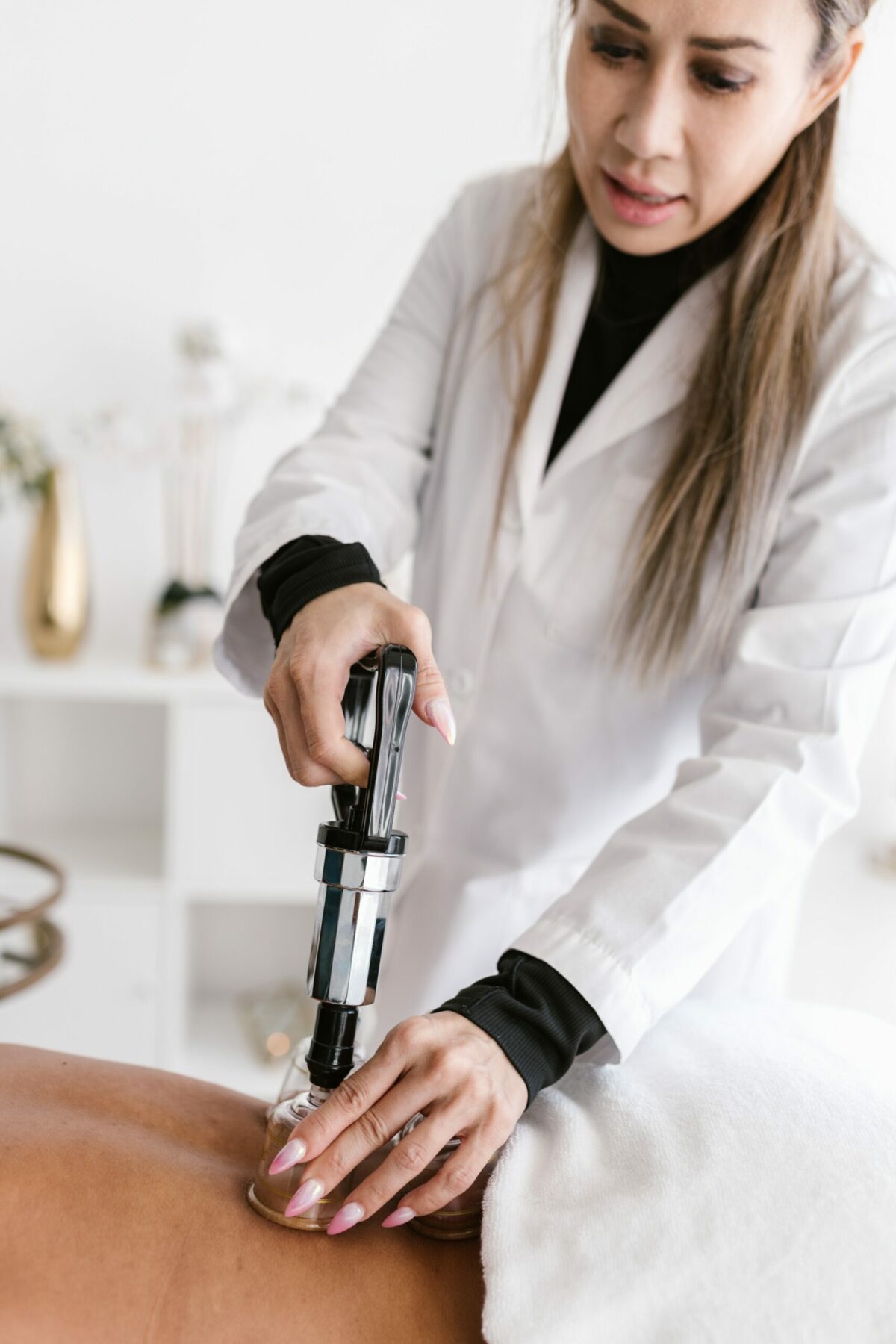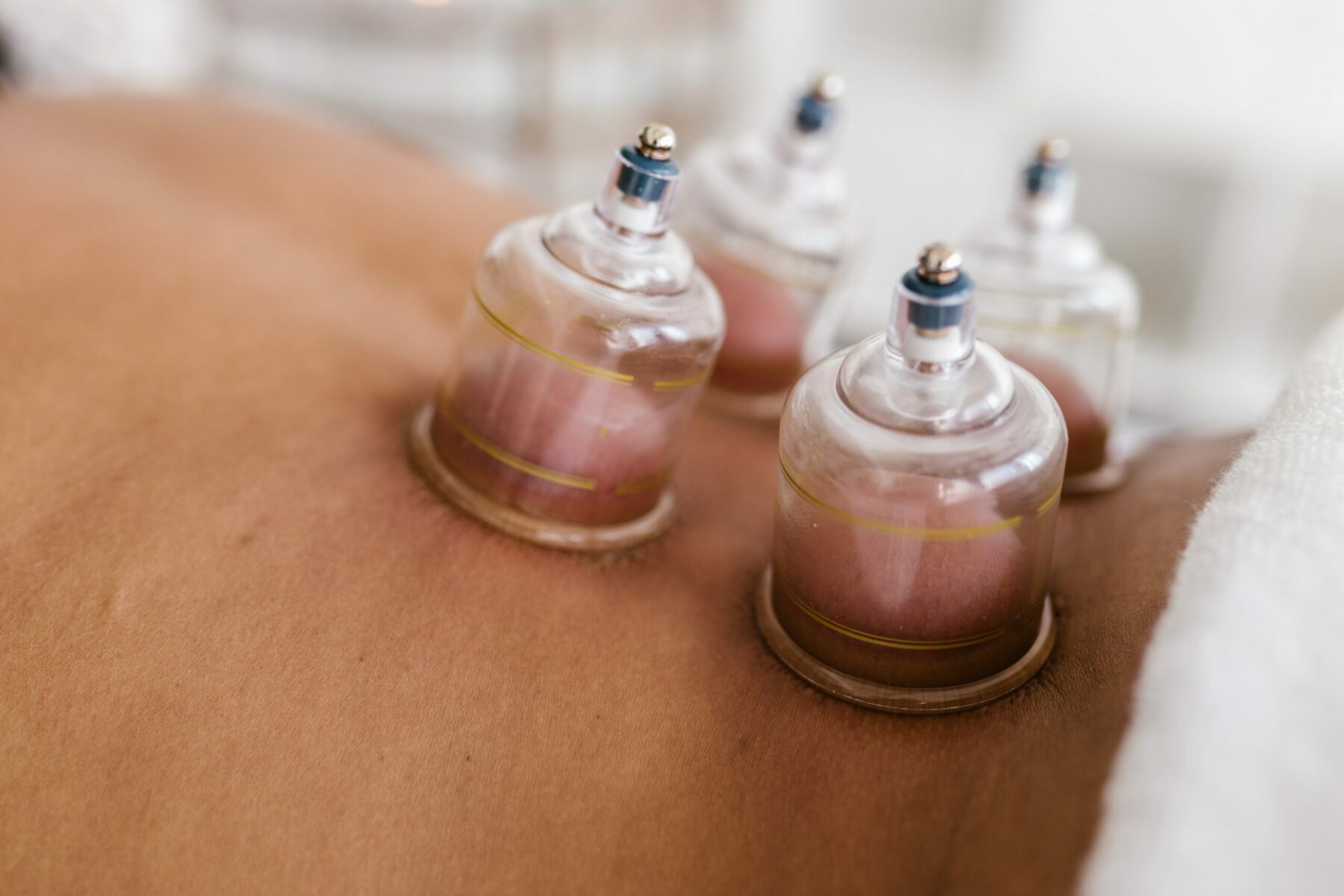How Does Cupping Work And Should Kids Use It?

You’ve probably seen a professional athlete who looks like they’ve been attacked by an octopus as they’re covered in circular-shaped bruises on their shoulders or back. If you were confused, don’t worry, you’re not alone. Those bruises are from a therapeutic intervention called “cupping.”
What is cupping?
Although cupping has recently gained popularity among the masses it’s actually an ancient traditional Chinese medicine. There are two types of cupping: wet and dry. Dry is what you’ll typically find in most physical therapy clinics where the skin is drawn into a cup. There are various types of dry cupping that include fire, sliding (with the assistance of a lubricant) and movement. Wet cupping involves small incisions and blood is drawn, along with the skin, from the wounds into a cup.

How does it work?
It’s believed that cupping benefits are derived from its ability to draw blood to a specific area. A vacuum device is used to pull the targetted tissue into a cup. The cups are usually made of glass, silicone or bamboo and come in a variety of sizes. The negative pressure inside the cup then encourages blood flow and increases circulation, which may promote healing and decrease pain.
Cupping is also believed to benefit our lymphatic system. The lymph system regulates fluid balance in the body and is an important part of our immune system. Some practitioners claim that cupping may help detoxify our bodies and even draw toxins from the tissues. However, there is little to no research to support this. Typically, cupping is used to treat musculoskeletal conditions (i.e. lower back pain) and respiratory diseases. There aren’t set guidelines on the pressure intensity and duration, but the generally accepted principle is that if the negative pressure is too low, it won’t elicit a skin blood flow response; too much pressure can cause pain and discomfort. The research isn’t definitive on its effectiveness but a systematic review published by the National Library of Medicine shows some benefits.
Myofascial Decompression (MFD) vs Cupping
From cupping, a relatively new approach that uses negative pressure called myofascial decompression (MFD) emerged. MFD assesses movement patterns and dysfunction and applies the cups based on anatomy and biomechanics. Active movement by the patient is then incorporated whereas, in typical cupping, the patient does not move. In an article published by The International Journal of Sports Physical Therapy, they compared MFD to self-myofascial release (i.e. foam rolling) and found that while both treatments provided improvements in hamstring length, the MFD group perceived an “enhanced treatment effect” for hamstring flexibility.
Who shouldn’t try cupping?
Like most interventions, there are absolute and relative contraindications. Generally, cupping should not be done over an open wound, anterior neck and fractures. For a complete list, you can visit this website.
Is it safe for children?
In short, yes. If there aren’t any of the contraindications listed above, then yes. A study in 2016 looked at children aged 4 to 18 suffering from functional constipation and the effects of dry cupping. They found that dry cupping was as effective as standard laxative therapy. There were no negative side effects to cupping on any of the participants.
I’ve used cupping therapy for musculoskeletal conditions in teenage football players without any negative effects. For younger children, one challenge may be finding a pressure that is comfortable yet still effective. I didn’t find any research that indicated that cupping wasn’t safe for children.
Should you try cupping?
If you’re experiencing musculoskeletal pain (i.e. neck, low back, knee pain), arthritic pain or headaches/migraines, then you may be a good candidate for cupping. Cupping is used to treat a variety of conditions so you should visit a professional from the list below for a full assessment.
- Physical Therapist
- Medical Doctor
- Acupuncturist
- Chiropractor
- Massage Therapist
Cupping is a relatively low risk, so most people can feel confident and safe enough to try it. Depending on the intensity and amount of pressure, you will experience varying degrees of “pinching” during and bruising after. Nevertheless, cupping has been proven to be effective for many athletes.
 About the Author
About the Author
Mark Denesha, PT, DPT is a Doctor of Physical Therapy and owner of Forever Forward Physical Therapy — Austin’s first, and only, fully equipped mobile PT clinic. FF PT services include manual therapy, strength training and injury recovery, when and where you need it. Mark’s collegiate sports and military background, combined with his curiosity for movement, have influenced his treatment style that prioritizes strength and function.






